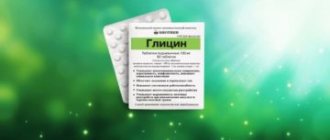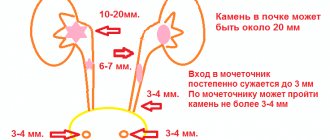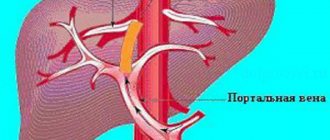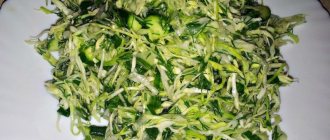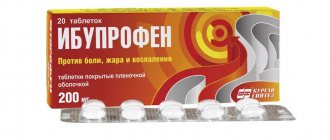At what pressure and why is it difficult to breathe?
Heavy and labored breathing occurs with high blood pressure. When blood pressure rises, there is additional stress on the heart. This forces the organ to work with double force. With hypertension, it is difficult for the heart to work harder, which leads to changes in blood circulation in the small and large circles. This process is fraught with coughing up blood and swelling of the limbs. Since hypertension is rarely recognized soon after its occurrence, doctors advise everyone who has reached adulthood to check whether their blood pressure is normal.
Other symptoms
A complete examination and diagnosis must be made by a doctor.
High blood pressure does not have specific symptoms that can immediately indicate the presence of a problem. Such problems in the body are usually detected during an examination by a doctor during a routine measurement of blood pressure, when a person comes with other complaints. Hypertension developed against the background of other chronic diseases is accompanied by the following symptoms:
Enter your pressure
Move the sliders
- headache;
- dyspnea;
- dry mouth;
- “wheezing” breathing with wheezing;
- involuntary trembling of the fingers or the whole body;
- drowsiness;
- accelerated heartbeat;
- slowness of action;
- “veil” before the eyes;
- chest pain;
- swelling of the eyelids or the entire face.
Such manifestations should alert you and become a reason to contact a specialist. Difficulty breathing accompanied by additional symptoms indicates a problem. More often they suspect an approaching hypertensive crisis, stroke or heart attack. The doctor will conduct an examination and a series of studies that will identify the source of such symptoms and prescribe the correct course of therapy.
Prevention of arterial hypertension
Prevention of arterial hypertension includes, first of all, normalization of lifestyle. You should avoid stress and emotional overstrain. It is worth noting that a sedentary lifestyle significantly relaxes a person.
As a result, shortness of breath occurs at the slightest exertion. Therefore, it is necessary to carry out sports in doses, starting with light walking, gradually lengthening the time of walking in the fresh air. This way you train the heart muscle and are saturated with oxygen, which is not enough.
A normal diet should also be part of the prevention regime. It is worth giving up highly spicy dishes and pickles.
Salt should generally be consumed in limited quantities. It not only increases blood pressure, but also retains water in the body, which is an additional burden for a person.
Therefore, avoid salty products in general, such as cheeses, sausages, smoked and salted fish, and so on. But you cannot completely give up salt consumption, as this can negatively affect the patient’s health.
We will discuss the regime of fluid consumption as a separate point. In particular, coffee and strong teas are contraindicated for arterial hypertension. They additionally affect your blood pressure and the body as a whole.
Remember that high blood pressure leads to rapid wear and tear of blood vessels, which in turn creates ideal conditions for the development of more serious heart diseases. Avoid alcohol and smoking, which increase blood pressure and affect the lungs and heart. Avoid alcohol and smoking, which increase blood pressure and affect the lungs and heart.
If you are overweight, you need to gradually reduce it through diet and exercise. It has already been experimentally proven that gradual weight loss leads to a gradual decrease in blood pressure. Drastic weight loss using pills or other means will not give you the expected results, but will only worsen your health.
Massage as a preventive measure is one of the best remedies. It is also recommended to visit sanatoriums or resorts, and it is desirable that they are located in a climate zone that is familiar to you. Then the acclimatization process will go more smoothly.
We suggest you read: Omeprazole and blood pressure
In such establishments you will undergo a course of physiotherapy, massages, health path (this is walking).
As a preventative measure, experts recommend taking warm baths. They help lower blood pressure and create ideal conditions for relaxation.
Static showers and inhalations, which will strengthen the blood vessels, will not be superfluous. A holiday at sea will strengthen blood vessels and the heart, and inhalation of sea air is considered the most effective and beneficial for the body.
If a person is overweight, then swimming in sea water as a physical activity is one of the best sports. In addition, the sea is calming and relaxing. If the patient does not have the opportunity to go to the sea, then swimming in the pool and physical therapy will help you achieve the desired effect.
Find out your risk level for heart attack or stroke
Take a free online test from experienced cardiologists
Testing time no more than 2 minutes
7 simple questions
94% test accuracy
10 thousand successful tests
It is worth paying attention to the fact that arterial hypertension has a hereditary predisposition. Therefore, if one of your relatives suffered from this syndrome, we recommend that you take preventive measures first, without waiting for symptoms to appear. These are just some recommendations that will help you determine a course of action and begin treatment. We wish you to be healthy!
We will discuss the regime of fluid consumption as a separate point. In particular, coffee and strong teas are contraindicated for arterial hypertension. They additionally affect your blood pressure and the body as a whole.
Massage as a preventive measure is one of the best remedies. It is also recommended to visit sanatoriums or resorts, and it is desirable that they are located in a climate zone that is familiar to you. Then the acclimatization process will go more smoothly.
Primary prevention comes down to eliminating negative factors that can affect the functions of the respiratory system. Such factors may include excess weight, physical inactivity, smoking, occupational hazards, and so on. It is necessary to review your diet in order to achieve gradual weight loss to individually comfortable numbers.
Giving up bad habits, such as alcohol abuse and smoking, can significantly improve the patient’s condition, and in some cases completely free him from debilitating attacks. It is extremely important to undergo an annual examination with a therapist and other specialists to exclude the progression of chronic diseases and the development of new pathologies.
Secondary prevention of dyspnea is more narrowly targeted. It refers to a set of measures to treat the underlying disease. In some cases, balneological treatment shows excellent results. Today, there are a large number of sanatorium-resort institutions and health resorts that, using a unique combination of natural factors, specialize in the treatment of cardiovascular and bronchopulmonary diseases accompanied by shortness of breath.
Tags: pressure, increased, suffocation
About the author: admin4ik
« Previous entry
Health care
Difficulty breathing due to pressure requires an immediate visit to the doctor. After conducting the necessary research, the specialist will be able to choose the right treatment. If pain or sudden suffocation occurs, you should seek medical help as quickly as possible. Before the medical team arrives, the person is seated on a chair with his head slightly tilted forward. In a critical condition, the patient is laid horizontally and his legs are raised so that it is not so difficult to breathe. A person needs to remove accessories and items of clothing that can impede breathing (tie, necklace, chains) and open windows for normal air circulation. The use of the drug “Nitroglycerin” is allowed (the tablet is placed under the tongue until completely absorbed; to speed up the effect, it can be crushed with your teeth).
Previously, low blood pressure was not considered something serious and was not included in the list of dangerous diseases. But gradually medicine changed its attitude towards this common phenomenon, and today doctors say that hypotension is no less dangerous than hypertension (high blood pressure), it requires careful diagnosis and timely correct treatment.
"Salbutamol"
This drug is primarily intended for emergency medical care. It is available in both tablet and spray form. Its main purpose is to help patients suffering from bronchial asthma. In addition, the drug is often prescribed to women undergoing uterine surgery.
Also "Salbutamol" is:
- Tablets for shortness of breath during bronchitis.
- A remedy against reversible obstructive processes in the respiratory tract.
- A drug that prevents the occurrence of bronchospasm in various diseases.
If we consider “Salbutamol” as a tablet for shortness of breath (in older people or middle-aged and young people), it must be taken three times a day, 1 tablet.
The drug is not prescribed to children under 4 years of age. It can be taken with caution during pregnancy, but only under the supervision of the attending physician.
Possible side effects:
- Trembling hands.
- Tachycardia.
- Headache.
- Nausea progressing to vomiting.
- Panic states.
- Hallucinations.
Uncontrolled use may result in bronchospasm and increased severity of shortness of breath.
What is hypotension
Arterial hypotension (another name for arterial hypotension) is a decrease in pressure, a deviation from the norm of 100/60 mm. Some people feel great when their blood pressure is reduced to a level of 90/60 mm or lower, and their well-being only deteriorates slightly at the moment when the values return to normal. In such cases, treatment is not required. Others tolerate hypotension extremely difficult. With low pressure, the tone of blood vessels decreases, blood circulation slows down, and the general condition of the body deteriorates significantly.
Diagnostic methods
To check cholesterol levels, the patient is given a blood test.
To begin with, the specialist listens to the patient’s complaints and learns his medical history. After this, blood pressure is measured using a tonometer. The patient's blood is taken for a lipid profile (cholesterol detection). If this substance is abnormal and the results indicate an increase, the cause of shortness of breath is a blockage of blood vessels. For diagnosis, a urine test is taken to determine hormonal levels. For additional purposes, ultrasound and ECG can be used to examine other organs, including the kidneys, heart, and brain.
Reasons for low blood pressure
The main cause of arterial hypotension is a decrease in the tone of the vascular system. In young people, it can be triggered by various infections, psycho-emotional or physical stress, and allergies. In older age, hypotension manifests itself against the background of certain ailments, such as ulcers, anemia, neurocirculatory dystonia, and chronic hepatitis.
Low blood pressure often affects sedentary people who lead a passive lifestyle. Insufficient muscle activity leads to deterioration of heart function, slowing blood flow, resulting in hypotension. Severe working conditions (humidity, high temperature, lack of air) can also cause a decrease in pressure. Many hypotensive people are also found in sports environments. The athlete’s body constantly withstands intense physical activity, so it is forced to “switch” to an economical mode. A weak pulse and low blood pressure are his natural protective reactions.
Main signs of hypotension
There are more than enough symptoms, but the most important of them is poor health, which occurs seemingly for no apparent reason. You should also be wary if the following occurs:
Pain appeared in the occipital region or temple area. It is caused by impaired blood circulation in the vessels of the brain. Often this pain is pulsating in nature, and migraine-like conditions are also possible.
My head is spinning and my vision is getting dark. As a rule, hypotensive patients encounter this problem in the morning when they get out of bed. Especially with sudden movements. In some cases it even leads to fainting, but this is rare.
There is not enough air, it’s hard to breathe. Sometimes people suffering from low blood pressure literally suffocate, especially during heavy physical labor.
Pain behind the sternum (or in the heart area). A decrease in vascular tone causes disruptions in cardiac activity. Such sensations can be constant and do not depend on stress - nervous or physical.
Limbs go numb. Hypotensive people have increased sensitivity to temperature changes. Sudden changes in temperature can cause numbness (coldness) of the extremities.
Arms and legs are weak, fatigue makes itself felt earlier than usual. People with low blood pressure are not highly productive. This is especially noticeable in the second half of the working day.
Mood changes often. Slow blood flow reduces vital activity, resulting in a tendency to depression. In addition, hypotensive patients exhibit irritability, many of them are emotionally unstable.
The face has become pale, the feet are sweating. People suffering from hypotension experience some external changes, namely the appearance of pallor. Many people's feet begin to sweat. At the same time, internal changes occur: the heartbeat quickens, the pulse becomes uneven, the body temperature (especially in the morning) does not reach 36°. Blood pressure is constantly below normal.
The most unpleasant symptom of hypotension is headache attacks, accompanied by darkening of the eyes, dizziness or nausea. During an attack, a hypotensive person experiences high sensitivity to noise, excessively loud sounds, sunlight or electric light. The condition worsens significantly if he lies in one position for a long time. Stuffiness in the room can also make a negative “contribution”.
Other symptoms of arterial hypertension
Lack of oxygen and shortness of breath with arterial hypertension (AH) are also accompanied by other symptoms. You should pay attention to these factors immediately and consult a doctor immediately. The main symptoms include:
- Weakness, dizziness, which in some cases may be accompanied by fainting;
- Malaise and increased fatigue;
- High blood pressure;
- Headaches and pain in the heart area;
- Feeling of hot flashes, redness of the skin on the face;
- Rapid fatigue of the patient;
- Noise in ears;
- Flashing of small spots of light, which patients describe as “floaters before the eyes.”
Shortness of breath gains the greatest strength during a hypertensive crisis. At this time, blood pressure rises sharply and other accompanying symptoms also increase accordingly. In this case, it is necessary to take immediate action, and if the patient lives alone, it is necessary to call an ambulance and ask neighbors for help.
Types of hypotension
There are three types of hypotension:
1. Orthostatic - a sharp drop in pressure during the transition to a vertical position. When a person gets up after sitting or lying for a long time, there is a rush of blood to the limbs. As a result, the pressure drops, severe dizziness appears, even to the point of loss of consciousness. The causes of this form of hypotension are different: the presence of neurological diseases, prolonged bed rest, dehydration and even pregnancy. People over 60 years of age are most susceptible to this type of hypotension.
2. Postprandial – occurs after eating. In a healthy person, after eating, the heart contracts faster and the blood vessels narrow. This does not happen in hypertensive patients. In a patient with postprandial hypotension, the blood rushes to the legs, the pressure drops, and the eyes darken.
3. Vegetative-vascular (also called vegetative-vascular dystonia) - manifests itself during prolonged stay in an upright position. Occurs due to disruption of communication between the brain and heart. When the patient is on his feet for a long time, blood rushes to them and the pressure drops. However, the brain receives a signal that it, on the contrary, has increased. To normalize it, he gives the appropriate command, and the pressure drops even more. Most often, vegetative-vascular hypotension occurs in young people.
"Furosemide"
This drug is a diuretic. Such drugs are always prescribed for the treatment of shortness of breath in chronic heart failure.
Furosemide is a loop diuretic. These tablets for cardiac shortness of breath block the process of reabsorption of chlorine and sodium ions. In addition, the active component of the drug reduces the degree of load on the main muscle in the body. Due to this, an antihypertensive effect occurs. In other words, after taking these tablets for shortness of breath, a person’s general condition significantly improves, and the unpleasant symptom recedes.
Furosemide is prescribed not only for heart failure. The following diseases are also indicated:
- Nephrotic syndrome.
- Liver pathologies.
- Kidney failure.
- Arterial hypertension.
The drug is contraindicated in the presence of acute renal failure accompanied by anuria, glomerulonephritis, hypertrophic obstructive cardiomyopathy, disturbances of water and electrolyte metabolism, lactase deficiency, wheat intolerance (not to be confused with celiac disease). In addition, Furosemide is not prescribed to children under 3 years of age or to women during pregnancy and lactation.
These tablets for shortness of breath must be taken on an empty stomach. The dosage directly depends on the disease and its severity. It is determined by the attending physician, taking into account the individual health characteristics of the patient. It is recommended to start therapy with a minimum dose of 20 mg.
The drug has an impressive list of side effects. Among them: tachycardia, headache, muscle cramps, apathy, lethargy, hearing and vision impairment, vomiting, stool disorders, decreased potency, allergic reactions.
Why is hypotension dangerous?
Doctors like to say: “Hypotonic in youth is hypertensive in old age.” This medical joke hints at very serious things. With prolonged low blood pressure, the body begins to strive for standard values, which leads to absolutely the opposite problem - the development of hypertension.
A decrease in pressure can be caused by serious problems in the body: dysfunction of the thyroid gland or adrenal glands, malfunctions of the nervous system, myocardial infarction, anaphylactic shock and others. The danger is that hypotension can be defined as a primary phenomenon, but the underlying disease will not be identified.
"Clenbuterol"
Another drug intended for people suffering from asthma. These tablets are also effective in treating shortness of breath. The active component of the drug has a beneficial effect on the bronchi, narrowing their lumens as much as possible. The patient's condition improves instantly. Moreover, the effect after administration lasts for 12 hours. The patient's airways are cleared, pathological secretions are removed, swelling and shortness of breath disappear.
Clenbuterol should not be taken if you have:
- Diseases of the thyroid gland.
- Tachycardia.
- Pregnancy.
- Tachyarrhythmias.
- Pathologies of the left ventricle of the heart of a non-inflammatory form.
- A history of myocardial infarction in the recent past.
Compared to other tablets for shortness of breath, Clenbuterol has the smallest list of side effects. The latter include: heart rhythm disturbances, tremor of the fingers, headache, inexplicable feeling of anxiety, skin reactions, relaxation of the muscles of the uterus in women.
Treatment of hypotension
Important: attempts to self-treat low blood pressure may result in a worsening of the condition, so it is better to consult a doctor. A cardiologist or neurologist individually prescribes the necessary medications to the patient. Most often, treatment is complex and consists of two groups of drugs:
1. Plant adaptogens that stimulate the functioning of the vascular and nervous systems, eliminate drowsiness and increase performance (Eleutherococcus extract, infusion of ginseng or Schisandra chinensis);
2. Alpha-adrenergic agonists that prevent blood stagnation and help with hypotensive crises and orthostatic disorders (Gutron, Midodrine, Phenylephrine);
Doctors recommend supplementing the effect of medications with regular walks, morning exercises, proper rest, as well as contrast showers and other water procedures (for example, swimming). Hypotonic people wouldn't mind a cup of coffee in the morning, but only one, otherwise you can easily become dependent on this pleasant drink.
How is the treatment carried out?
Treatment of shortness of breath is required only after determining the root cause of its occurrence. If there is a violation, the patient is prescribed the following medications presented in the table:
| Medicines | Name |
| Selective beta-agonists | "Salbutamol" |
| "Eufillin" | |
| Venous vesodilators | "Nitroglycerine" |
| Sedatives | "Diazepine" |
For shortness of breath, it is possible to treat with folk remedies that will help stabilize blood pressure and eliminate other unpleasant manifestations of the underlying disease. Dill decoction, flower honey, and warm goat's milk are useful for this condition. If conservative methods fail, surgical intervention is performed.
How to help a person whose blood pressure has dropped sharply
If someone feels unwell due to a sudden and severe drop in blood pressure, then they will most likely need outside help. Urgent measures consist of the following:
The person should be laid down with the head slightly below the body,
You need to raise your legs a little - this will increase the volume of blood entering the brain,
It is advisable to massage the patient’s neck and apply a cold compress to the forehead.
In cases where the pressure drops not due to a dangerous disease, this is usually enough to normalize it. In all others, immediate hospitalization is required.
low blood pressure
Until recently, patients, hearing from a doctor: “You have hypotension,” sighed almost with relief: low blood pressure is nothing, which means there is less risk of developing hypertension. Yes, of course, morning weakness, “devils” in the eyes when trying to cheerfully jump out of bed... But you can do exercises and drink coffee.
Those who suffer from it are sometimes unaware of the insidiousness of hypotension. However, there is some good news. Hypotension is not always a disease; in 10% of people it is just a feature of the body. Those. Of the 7 billion people alive today, about 700 million are natural hypotensives! At the same time, hypotension is also a disease, and by no means a rare one. And women, especially those of the prime age of 20-40, use it more often.
How to deal with shortness of breath
Effective treatment, including medications aimed at normalizing blood pressure, helps to cope with shortness of breath. This will stabilize the patient's condition. A certain diet is also prescribed, in which fatty, spicy and floury foods are completely excluded.
It is worth noting that diet and obesity are directly related to shortness of breath, often being the root cause of this alarming symptom. The heart simply cannot push enough oxygenated blood through all the layers of fat.
We suggest you read: What is blood pressure for hypotension?
And physical activity caused by body weight can be minimal, but at the same time cause arterial hypertension and its accompanying symptoms. Therefore, in addition to treatment, a course of weight loss is also prescribed.
It is worth noting that even people who are not overweight often suffer from hypertension. Physical activity is necessary in any case. No wonder they say that movement is life.
The main thing is to start small. Light, short walking will allow the body to saturate itself with oxygen, but shortness of breath will not increase. This is why doctors recommend doing sports in cases where you are prepared for it. Otherwise you will have to start small.
It is worth noting that, in addition to drug treatment, yoga is actively praised in the context of normalizing blood pressure. Moreover, it is not so much the postures that are important, but the breathing system. In addition, the simplest poses will give you the opportunity to do the very load that your body needs.
Many people recommend coping with shortness of breath with folk remedies, but we strongly recommend that you consult a doctor and get advice on this matter. After all, without knowing the real root cause of the symptom, you can only aggravate the picture and “blur” the overall symptoms, which as a result makes it difficult to make a correct diagnosis.
It is worth noting that even people who are not overweight often suffer from hypertension. Physical activity is necessary in any case. No wonder they say that movement is life.
By the way, physiotherapeutic procedures such as galvanic collar, electrophoresis and massage of the cervical region and head have proven themselves very well. These procedures allow not only to normalize blood pressure, but also to relieve associated symptoms, such as stress, shortness of breath and other manifestations or root causes of the disease.
If the condition is assessed as severe, the patient may be advised to undergo inpatient treatment, which will allow achieving a greater therapeutic effect. In other cases, patients are recommended to undergo sanatorium-resort treatment once a year, which allows conditions available only in certain areas to improve the patient’s health and cope with arterial hypertension under the supervision of qualified personnel.
Causes of hypotension:
- vitamin deficiency;
- lack of sleep,
- frequent stress;
- psychological trauma;
- hepatitis
You can distinguish a natural feature from an illness without a doctor. Natural hypotension is detected very early, up to ten years. There is no way to have it as an adult. Naturally hypotensive people also experience lethargy in the morning, and they often “get up on the wrong foot,” but for them this is not a problem, because... all manifestations are smoothed out.
It’s a different matter for a hypotensive patient - he has a “bad morning”, and there is darkness in his eyes, and his arms and legs are always freezing (or even numb), and causeless fears are creeping in, and it’s difficult to breathe, and “his head is pounding.” People who are naturally prone to low blood pressure are not aware of these “charms”.
Signs of hypotension
- palpitations and interruptions in heart rhythm;
- weakness, drowsiness, decreased ability to work;
- violation of thermoregulation (freezing of extremities);
- dizziness, unsteadiness;
- dull pain in the forehead and temples;
- effect of weather on well-being;
- pale face;
- increased irritability.
And hypotonic crises with loss of consciousness and a barely perceptible pulse - they certainly cannot be attributed to a peculiarity of the body.
Natural hypotension is relatively easy to control. The first rule is to get enough sleep. Secondly, don’t get up suddenly in the morning, start exercises while lying in bed (five minutes of regular gymnastics and a contrast shower won’t hurt either). The third rule is that in addition to coffee, have a spicy and salty dish for breakfast to awaken your appetite and raise your blood pressure to safe levels. Hypotensive people not only can eat salty food, but they need it. For them, the daily salt requirement is not 5 grams, but 6-7. So crunching on some pickled cucumbers or treating yourself to sauerkraut in the morning is a nice thing to do.
But hypotension, a disease, alas, cannot be pacified by pickles. If she came into your life, you urgently need to find out where she came from. Previously, it was believed that hypotension was a consequence of poor functioning of brain neurons, which impeded cerebral circulation. But now it is known that this disease often occurs due to... hidden bleeding.
Diagnosis of hypotension
The search for the causes of this disease should begin with a detailed blood test. If there are not enough red blood cells in the blood, there is not enough iron - these are signs of hidden bleeding, and hypotension here is secondary, it is just a symptom.
In men, such bleeding often occurs due to an ulcer in the stomach or duodenum. Women usually suffer from occult blood loss due to gynecological problems.
A lack of thyroid, pituitary or adrenal hormones in the blood is a sign that the disrupted activity of these glands is to blame for hypotension. Otherwise, hypotension developed due to deficiencies in cerebral circulation. And what’s bad is that doctors have no reliable means against it (except for those that emergency doctors use to relieve a crisis).
Tablets for hypotension
True, sometimes neuroprotective drugs, for example, piracetam, are suitable for individual hypotensive patients - it stimulates metabolism in nerve cells, improves the movement of blood that washes the brain. You can try taking it for a month - 1 tablet before breakfast and 1 before lunch. If it doesn’t work, you shouldn’t even start using imported analogues, doctors advise.
Treatment of hypotension with folk remedies
If so, it is better to focus on centuries-tested herbal medicines. They are the inexpensive and effective ones that are the first saviors for hypotension caused by poor blood supply to the brain.
- So, to stimulate the autonomic brain centers, alcohol tinctures of the roots of Aralia Manchurian and Eleutherococcus are useful: dilute 30 drops in warm water (about a third of a glass) and drink before meals. Twice a day.
- And tincture of ginseng root perfectly constricts blood vessels. Take a tablespoon of warm water and add 15-20 drops. Drink after meals - three times a day. Instead of infusion, you can simply take ginseng root powder. You need to take it just a little bit - on the tip of a knife. There is no need to dilute it, just drink it with warm water.
- Whichever of these medications you choose, you need to take it for 4 monthly courses with breaks of 2 weeks. But if you have sclerosis of the arteries or internal bleeding, they cannot be treated!
- St. John's wort decoction helps relieve anxiety and depression with hypotension: pour a spoonful of this herb with a cup of boiling water and hold for a quarter of an hour on low heat, let it simmer. Drink strained “tea” before breakfast – a quarter cup. In the evening, it is better to take a soothing valerian “tea” or lemon balm “tea”.
- Pound valerian in a mortar, pour 2 teaspoons into a glass, brew, and let sit for at least 10 hours. Keep the infusion cool, consume it without straining, 3-4 tablespoons at night. With lemon balm it’s even easier - brew 3 teaspoons per cup, leave and drink immediately.
Everything about hypotension today. In the next article we'll talk
HEART FAILURE
occurs when the heart muscle is overloaded and overworked (hypertension, heart defects), its blood supply is disrupted (myocardial infarction), inflammatory (myocarditis), dystrophic (thyrotoxicosis) or cicatricial (cardiosclerosis) changes in the heart muscle. Spill-. include acute and chronic heart failure.
Acute left ventricular heart failure complicates the course of rheumatic heart defects, myocardial infarction, acute myocarditis, acute nephritis, etc. Rapidly increasing stagnation in the pulmonary circulation leads to the development of cardiac asthma and pulmonary edema (see relevant sections).
Acute right ventricular failure develops during an intractable attack of bronchial asthma, thromboembolism of the branches of the pulmonary artery and other diseases accompanied by a sharp increase in pressure in the vessels of the pulmonary circulation or inflammatory, dystrophic, cicatricial changes in the muscle of the right ventricle, which does not have time to distill all the blood from the right ventricle atrium into the pulmonary artery - acute congestion occurs in the veins of the systemic circulation.
Symptoms and course. Elevated position of the patient in bed, acrocyanosis, swelling and pulsation of the veins of the neck, enlargement and pain on palpation of the liver, tachycardia, expansion to the right of the boundaries of relative dullness of the heart, with a long duration of decompensation - edema; the condition threatens the patient's life and requires emergency treatment.
Treatment. Bloodletting - 400-500 ml (contraindicated if blood pressure drops), slow intravenous administration of 0.5 ml of 0.05% solution of strophanthin (or 1 ml of 0.06% solution of korglykon), 10 ml of 2.4% solution of aminophylline (especially indicated for signs of bronchial or cardiac asthma and is contraindicated in low blood pressure) and 2 ml (40 mg) of Lasix with 10-20 ml of saline or 5% glucose solution. If intravenous administration of drugs is impossible, strophanthin is administered intramuscularly in the same dose (with 2 ml of 2% novocaine solution), 1 ml of 24% diaphylline solution (or 2 ml of 12% aminophylline solution), 1-2 ml of novourite (or 40-80 mg furo-semide orally).
In addition to cardiac drugs and diuretics, pathogenetic therapy is used depending on the nature of the underlying disease: drugs that relieve bronchial spasms for bronchial asthma, anticoagulants for pulmonary embolism, etc. After the patient’s condition improves, they must be hospitalized (usually by ambulance on a stretcher, accompanied by a paramedic) .
Chronic heart failure. Symptoms and course. Most often, the first manifestations of circulatory failure are shortness of breath and tachycardia, which appear with slight physical stress; at rest there are no symptoms of decompensation. This is stage I; it lasts for several months or even years, then, in addition to increasing shortness of breath, cyanosis, and weakness, symptoms of right ventricular failure are added - liver enlargement, swelling in the legs; the heart is enlarged, soft moist rales are heard in the lungs; attacks of cardiac asthma are possible, i.e. stage II of circulatory failure occurs. It is customary to distinguish two periods: in the first (PA stage), signs of weakness of the left heart, shortness of breath that persists at rest, congestive wheezing, and cardiac asthma predominate; in cases where the right parts of the heart (pulmonary heart) are initially affected, a slight enlargement of the liver and other signs of venous stasis are detected even without physical stress. Compliance with bed rest, the use of mild cardiac and diuretics usually quickly restore the state of compensation. In the second period (PB stage), heart failure becomes total, symptoms of circulatory failure are more pronounced, shortness of breath is constant. Bed rest without vigorous therapy with cardiac and diuretics does not lead to circulatory compensation. In stage III, as a result of a decrease in the reserve capacity of the myocardium, full compensation is impossible even with vigorous therapy; persistent changes develop in the liver (cardiac cirrhosis), kidneys and other organs. Finally, in the terminal dystrophic stage, severe dropsy of the serous cavities, anasarca, and progressive exhaustion of the patient are observed. The given division into stages is arbitrary, but still helps to outline a treatment regimen.
Treatment. Drugs and doses are selected individually, taking into account the stage of the disease. In stages I and PA, bed rest for several days, followed by a gentle regime of work and rest (avoid significant physical and nervous stress, intoxications). Diet (restriction of salt and liquid), systematic use of Adonis herb infusion (brew 3-6 g of herb in 100 ml of water in the form of tea and drink throughout the day) can completely restore circulatory compensation. In case of ineffectiveness or poor tolerability (irritation of the gastrointestinal tract) of Adonis, as well as in more severe (starting from the PB stage) heart failure, digitalis preparations are used, and the therapeutic dose is prescribed by a doctor (preferably in a hospital); After achieving a therapeutic effect, the doctor transfers the patient to a maintenance dose, which the patient often takes on an outpatient basis for the rest of his life. For digitoxin, the maintenance daily dose most often ranges from 0.05 to 0.15 mg, for digoxin - from 0.25 to 0.5 mg, for isolanide - from 0.5 to 1 mg, for digitalis powder - from 0.1 up to 0.15 g; the patient needs dispensary (medical and then paramedic) observation. In case of severe circulatory failure and the impossibility of immediate hospitalization, the patient is administered intravenously (if he has not received digitalis preparations in recent days) 0.5 ml of strophanthin solution or 1 ml of corglicon solution with 20 ml of 5% glucose solution.
Diuretics are used simultaneously with heart medications; furosemide; hypothiazide, novorit in combination with potassium chloride; due to the possibility of disturbances in electrolyte metabolism and other complications, treatment with diuretics also requires medical supervision. If fluid accumulates in the abdominal cavity, it is removed by puncturing the abdominal wall with a trocar. Oxygen therapy is required. Along with pathogenetic therapy of heart failure, treatment of the disease that caused it is carried out,
Prevention. Treatment of the underlying disease, adherence to work and rest schedules, diet. Spa treatment in specialized cardiological sanatoriums.
low blood pressure
Until recently, patients, hearing from a doctor: “You have hypotension,” sighed almost with relief: low blood pressure is nothing, which means there is less risk of developing hypertension. Yes, of course, morning weakness, “devils” in the eyes when trying to cheerfully jump out of bed... But you can do exercises and drink coffee.
Those who suffer from it are sometimes unaware of the insidiousness of hypotension. However, there is some good news. Hypotension is not always a disease; in 10% of people it is just a feature of the body. Those. Of the 7 billion people alive today, about 700 million are natural hypotensives! At the same time, hypotension is also a disease, and by no means a rare one. And women, especially those of the prime age of 20-40, use it more often.

